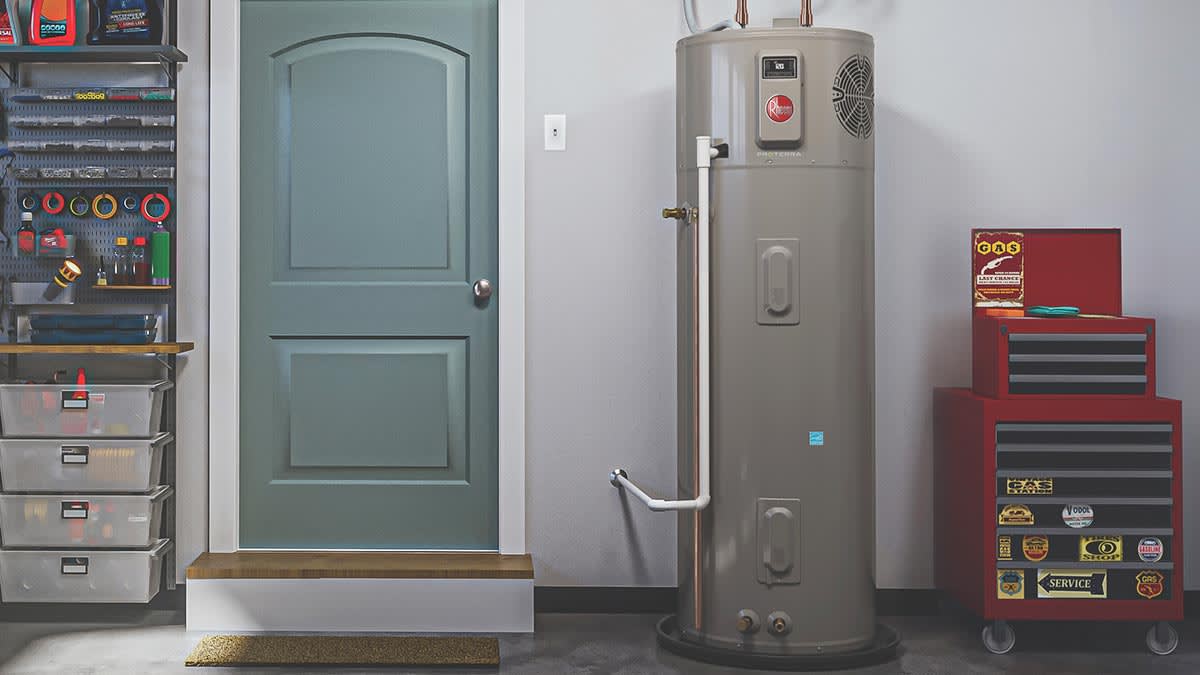A heat pump water heater looks similar to the storage tank heaters most of us are used to. But it contains a heat pump unit, usually on the top, that pulls heat from the air to heat the water. Most heat pump water heaters (sometimes called hybrid water heaters) also have backup electric elements that kick in at times of high demand, and which can be optionally disabled to stay in the most efficient mode.
Why buy one: The ASAP’s Mauer says heat pump water heaters are “conservatively” at least twice as efficient as traditional electric water heaters, with the most efficient ones using less than a quarter of the energy of an electric resistance water heater. Energy Star estimates that an Energy Star heat pump water heater will use about 70 percent less energy than a standard electric water heater, saving a family of four about $550 per year on its electric bills, and $5,600 over its lifetime.
Why not: The biggest barrier to switching to a heat pump water heater is higher up-front costs. Home Depot estimates a total cost, including installation, of $2,500 to $5,000. We found prices for 50- to 65-gallon heaters themselves (without installation) between $1,449 and $1,950; heat pump water heaters in our ratings range from just over $1,800 to more than $5,000. But federal, state, and utility incentives can defray those costs.
Incentives: Through the 2022 Inflation Reduction Act, Energy Star certified heat pump water heaters are currently eligible for a federal tax credit of 30 percent (up to $2,000) of a project’s costs. There are also state and utility incentives. For instance, New York State’s Energy Research and Development Authority offers a $1,750 incentive for those with incomes below 80 percent of the median. In Washington State, customers of Puget Sound Energy can save $750 on the purchase of a heat pump water heater and income-qualified residents can save $850.
What to know: Heat pump water heaters are available in both 240- and 120-volt versions; higher voltage models usually have an electric resistance element to optionally help heat more water faster when the tank is depleted. However, if you’re replacing a gas appliance and your utility space isn’t wired for higher voltage, 120-volt systems are still a good alternative even if they aren’t as fast, says Scott Cohen, director of marketing for Rheem, one of the nation’s largest water heater manufacturers.
You might also have trouble fitting one in your mechanical room: Heat pump models with the compressor mounted on top are taller than standard water heaters and need a slightly larger tank to provide the same amount of hot water. Note that some models offer side connections to compensate for the extra height, and our top-rated model, the Sanden SanCO 2, is a “split system” in which the heat pump can be installed at a distance from the tank (including outdoors). Indoors, heat pump models require a certain amount of airspace to operate efficiently, as well as a drain or pump to remove condensate. They are noisier than standard tank heaters, and the heat extraction process can chill the space they’re placed in.
Source link
